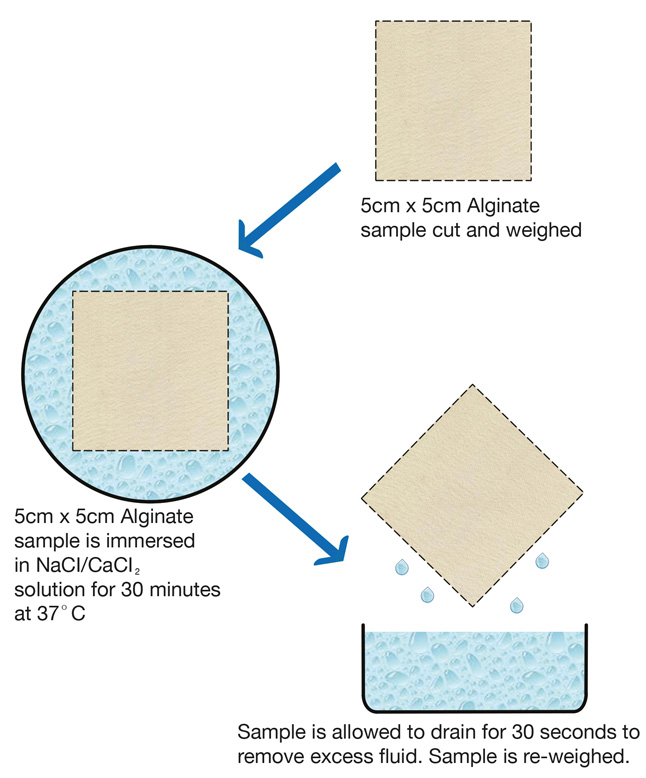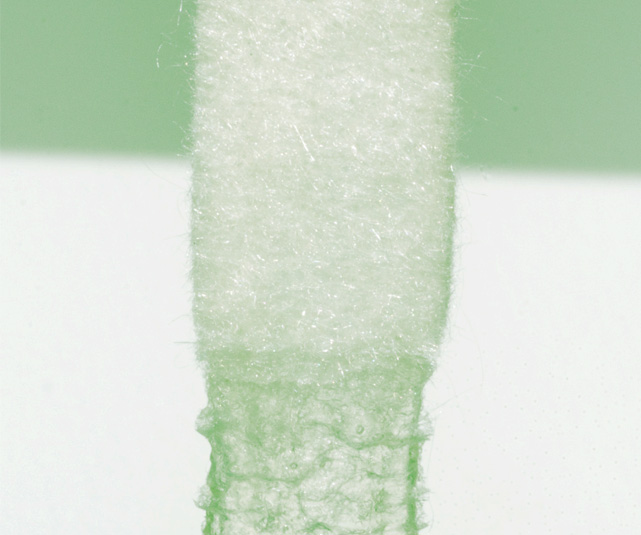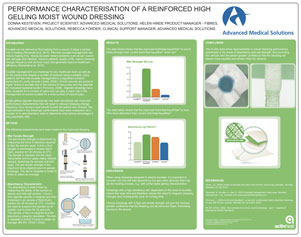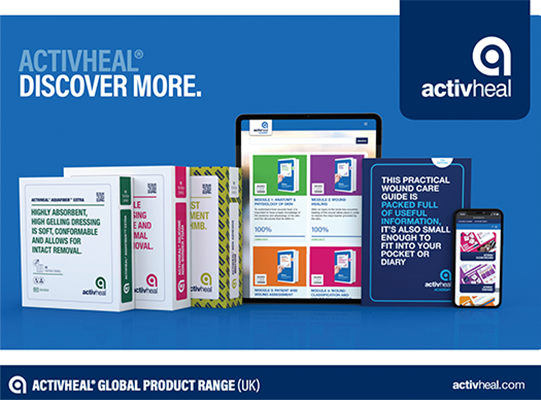Clinical Resource
Performance Characterisation of a Reinforced High Gelling Moist Wound Dressing
Lynne Hepworth, Lead Tissue Viability Nurse
Donna Kesteven, Project Scientist, Advanced Medical Solutions
Helen Hinde, Product Manager – Fibres, Advanced Medical Solutions
Rebecca Forder, Clinical Support Manager, Advanced Medical Solutions
Clinical Resource
Performance Characterisation of a Reinforced High Gelling Moist Wound Dressing
Lynne Hepworth, Lead Tissue Viability Nurse
Donna Kesteven, Project Scientist, Advanced Medical Solutions
Helen Hinde, Product Manager – Fibres, Advanced Medical Solutions
Rebecca Forder, Clinical Support Manager, Advanced Medical Solutions
BACKGROUND
Exudate can be defined as fluid leaking from a wound. It plays a central role in healing (Romanell et al, 2010). Effective exudate management can reduce healing time, reduce exudate related problems such as peri wound skin damage and infection, improve patients’ quality of life, reduce dressing change frequency and clinician input, and generally improve healthcare efficiency (Romanell et al, 2010).
Exudate management is a challenge for any healthcare team as well as for the patient and despite a number of products being available, many patients still feel that exudate management is a significant problem, particularly for cavity wounds (Jones, 2008). Chronic wounds are prone to higher levels of exudate due to the volume of tissue loss and the potential for increased bacterial burden (Timmons, 2008). Alginate dressings have been available for a number of years and can play a major role in the management of wound exudate for a wide number of wound types.
A high gelling alginate dressing has now been developed with improved performance characteristics that will result in reduced dressing change frequency, thus having a dual benefit to both the patient and clinician. The improvements in the dressings’ performance have been measured via a number of in-vitro laboratory tests to determine what clinical advantages it may potentially offer.

METHOD

Wet Tensile Strength:
The wet tensile strength is determined by measuring the force in Newtons required to tear the sample apart. A 2cm x 6cm sample is submerged in excess NaCl/ CaCl2 solution for 30 minutes at 37oC.
The sample is clamped into the Lloyd Tensometer and the upper clamp retracts upward, stretching the sample until torn apart. The wet tensile strength is the maximum force obtained prior to sample breakage. The test is repeated a further 9 times to obtain an average.

Absorbency Characteristic:
The absorbency is determined by measuring the ability of the sample to absorb and hold salt solution. A 5cm x 5cm alginate sample is weighed and then immersed in an excess of NaCl/CaCl2 solution for 30 minutes at 37oC.
Forceps are used to suspend the sample out of the solution and to drain for 30 seconds. The sample is then re-weighed and the absorbency capacity calculated. The test is repeated a further 9 times to obtain an average (BS EN 13726-1:2002).
RESULTS
DISCUSSION
Dressings with a high absorbency will, dependant on the level of exudate, extend the wear time and therefore reduce the need for frequent dressing changes and consequently save on nursing time.
Fibrous dressings with a high wet tensile strength will give the clinician greater confidence that the dressing can be removed intact, minimising trauma to the wound.
CONCLUSION
References
Jones, J.E. (2008) Impact of exudate and odour from chronic venous leg ulceration. Nursing Standard. 22 (45) 53-61
Romanell, M. Vowden, K. Weir, D. (2010) Exudate management made easy. Wounds International. 1 (2). Available from www.woundsinternational.com
Timmons, J. (2008) ActivHeal Aquafiber®, a new soft, conformable highly absorbent dressing for use with chronic wounds. Wounds UK. Vol 4,No3. 88-91.
BS EN 13726-1:2002. Test methods for primary wound dressings – part 1: Aspects of absorbency (British Standard).



CONTACT US FOR MORE INFORMATION
Discover ActivHeal®
Social Media
Our Product Range
AMS Group
ActivHeal®, its logo and the Advanced Medical Solutions logos are registered trademarks of Advanced Medical Solutions Ltd.
Copyright © Advanced Medical Solutions Limited | Design by Lumisi Ltd


